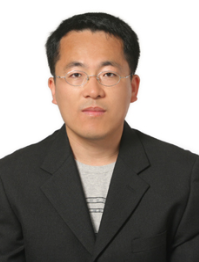Media Center
A multimedia mosaic of moments at GIST
GIST Excellence
Dr. Kang Yang-joon of School of Mechatronics to teach at Chosun University
- 김슬혜
- REG_DATE : 2014.03.24
- HIT : 867
Dr. Kang Yang-joon of School of Mechatronics to teach at Chosun University Dr. Kang Yang-joon (41) who received a doctorate at MEMS Lab (advisor, Yang Sung) of the School of Mechatronics, GIST (Gwangju Institute of Science and Technology, President ž Young Joon Kim) was employed as assistant professor at the Department of Mechanical Engineering of Chosun University and will start teaching from the Spring semester this year. Dr. Kang studied the field of measurement of biophysical properties of blood based on micro fluidic platform in GIST and has worked as postdoctoral researcher after acquiring a doctorate in August 2011. In order to get an accurate measurement of blood viscosity as part of his studies, Dr. Kang conducted research on “blood viscometer based on microfluidic device which helps to control fluid temperature and stabilize flux.” During doctoral courses, he published 5 papers in SCI-registered journals and applied for 9 patents (7 domestic and 2 overseas), among which 8 patents related to blood viscometer led to technology transfers later on. He shared research outcomes at academic symposiums at home and abroad and received three awards for outstanding paper (1 domestic and 2 overseas). As such, Dr. Kang has been recognized for his excellent research capabilities since he was in degree courses. Thus far, he has published a total of 11 SCI-level papers (9 papers as lead author), among which 7 (written as lead author) were published in top 10% international journals. 70 patents were registered by Dr. Kang (43 domestic and 27 overseas). After acquiring a doctorate, he worked as research professor at Center for Biofluid and Biomimic Research, POSTECH and has carried out research in the field of hemodynamics and hemorheology based on extracorporeal circulation loop and biochips of animal models. 